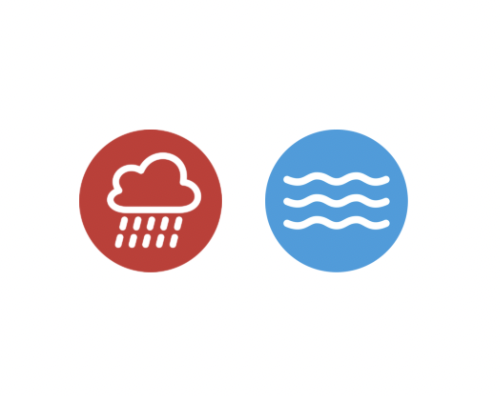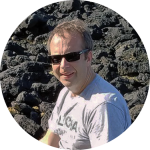SPONSOR:
National Institute for Water Resources, Water Resources Research Institute Program
PROJECT PERIOD:
03/01/2014-02/29/2016
ABSTRACT:
Problem and Research Objectives
Problem I: Distribution of microorganisms in beach water and sand is patchy. It is well established that distribution of microbes in the environment is heterogenous (Whitman and Nevers 2004), and that the detection of a sewage contamination event may be missed when using current water quality monitoring programs that utilize samples of 100 mL. A single 100 mL sample of water or sand may not be representative of the actual water quality and of the associated human health risk at a given site (Whitman and Nevers 2004). Sample volumes larger than 100 mL should be analyzed which would require a concentration technique.
Problem II: Fecal indicator bacteria can originate from multiple sources, and source specific markers may elude detection by conventional methods because marker concentrations are often low.
Reliable information on a contamination source is needed to make meaningful management decisions and to better protect public health in Hawaii. Fecal indicator bacteria can originate not only from humans but from animals and have been isolated from the environment (Byappanahalli et al. 2012a, Byappanahalli et al. 2012b, Hardina and Fujioka 1991, Harwood et al. 2014). Several source specific bacteria and viruses have been identified in the last decade and have been validated by our laboratory for use in water quality monitoring (Harwood et al. 2013, Harwood et al. 2014, Boehm et al. 2013, McQuaig and Noble 2011). They have been tested for sensitivity, specificity and survival in water samples from coastal and inland sites of Oahu. Since the levels of source specfic microorganisms are relatively low compared to indicator bacteria, the detection and quantification of source specific markers is hampered and the ability to concentrate source specific markers from large sample volumes is needed.
Problem III: Monitoring for fecal indicator bacteria may not be sufficient to adequately protect public and environmental health. Monitoring for human pathogens themselves, however, is difficult using conventional methods because their concentrations in 100 mL samples are often below the detection limit.
Direct targeting of human pathogens is important today because the changing environment (climate change and related ocean acidification, storm events) will alter the dynamics of microbial communities including those consisting of environmental and sewage- borne pathogens. The direct surveillance of pathogens is currently not possible for several reasons, one of which is that human pathogens are usually in low amounts in the environment. The ability to concentrate large volume samples is needed.
Solution: The Portable Multi-use Automated Concentration System (PMACS) is a hollow fiber based dead-end ultrafiltration device developed and validated at Dr. Daniel Lim’s laboratory at the University of Southern Florida (USF). This system allows analyses of sample volumes 1,000× larger (100 L) than sample volumes analyzed by traditional filtration techniques (100 mL). It offers two major advantages: 1) PMACS enables detection of low level microbial targets such as source specific markers and human pathogens, and 2) PMACS reduces sample variability in long-term monitoring programs because the analysis of a large volume sample is more representative of the site than analysis of a single sample of 100 mL. This filtration system has been used by the USF group for a variety of microorganisms but needs further evaluation under conditions specific for Hawaii.
Project Goal: This project will evaluate the ability of PMACS to concentrate microbial indicator bacteria and source specific microorganisms as well as human pathogens from large volume water samples collected on Oahu.
PRINCIPAL INVESTIGATOR

